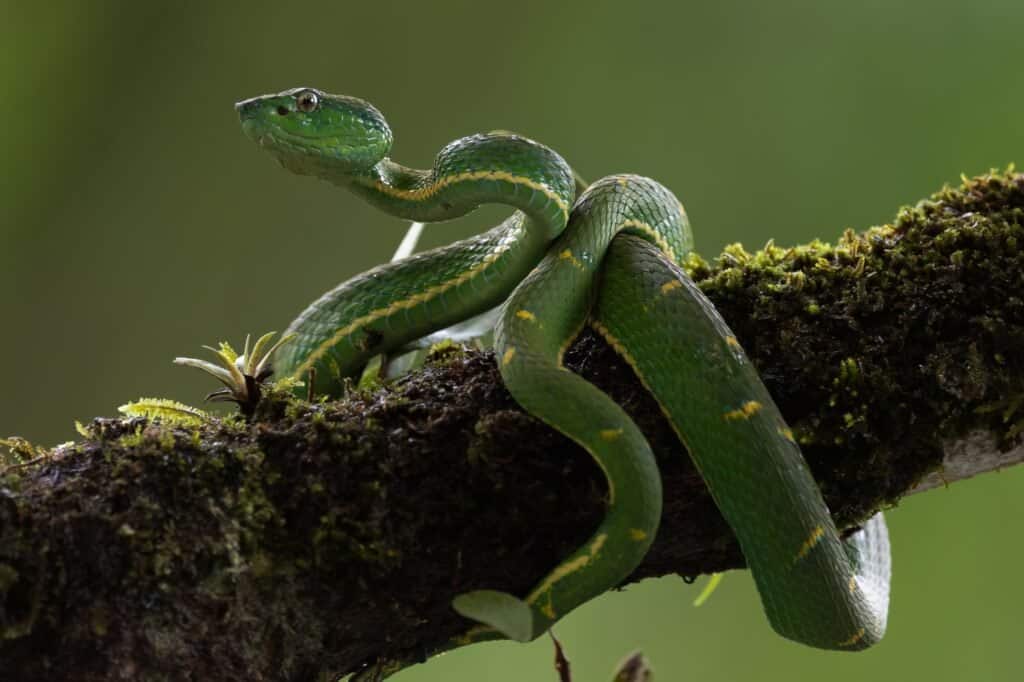Introduction
When it comes to venomous serpents, Australia is home to a few of the most remarkable and harmful varieties in the world. Among these, the Tiger Snake attracts attention not just for its potent venom but also for its interesting habits. Comprehending the actions of venomous serpents like the Tiger Serpent is vital for both wildlife enthusiasts and those staying in locations where these serpents are present. This short article delves into different facets of Tiger Serpent actions, habitat, recognition, safety measures, and emergency treatment practices in situation of a serpent bite.
Understanding the Actions of Venomous Snakes Like the Tiger Snake
The Tiger Snake, medically referred to as Notechis scutatus, is Conservation and Education notorious for its hostile nature when threatened. These serpents exhibit a variety of habits that can be quite different from their non-venomous counterparts.
Characteristics of Tiger Snakes
The green tree snake Tiger Snake is easily well-known as a result of its distinct bands or red stripes that look like a tiger's markings. They can vary in shade from yellowish-brown to dark olive or black. This pigmentation offers not just as camouflage but additionally as a caution signal to potential predators.
Adaptability to Environment
One exceptional element of their actions is their adaptability to numerous settings. Discovered mostly in coastal regions, marshes, and wetlands across Australia and Tasmania, they can flourish in varied environments including metropolitan areas.
Hunting Techniques
Tiger Serpents are ambush predators largely eating fish, frogs, and small mammals. They possess eager vision and a severe sense of smell which helps them in finding target effectively.
Venom Composition
Their venom consists of neurotoxins that influence the nervous system, leading to paralysis or death in smaller sized pets. For people, prompt medical attention is important after a tiger serpent bite due to its potentially lethal effects.
Natural Habitat of Tiger Snakes
Preferred Locations
Understanding where these serpents stay clarify their behavioral patterns. The tiger serpent habitat consists of:
- Coastal regions Swamps Grasslands Urban areas with abundant water sources
Seasonal Movements
During warmer months, Tiger Snakes are a lot more energetic as they indulge in sunshine or search for food. In contrast, colder months see them pulling back right into hibernation sites.
Are Tiger Snakes Venomous?
Yes! The inquiry "are tiger serpents poisonous?" frequently develops amongst those unfamiliar with this types. Their poison is taken Helpful site into consideration one of the deadliest among all snake varieties worldwide.
Symptoms of a Tiger Serpent Bite
If bitten by a tiger serpent, signs may consist of:
- Localized pain Swelling at the bite site Nausea and vomiting Sweating and confusion
Immediate medical assistance is essential as untreated attacks can cause serious wellness difficulties or even death.
First Help for Snake Bites: Quick Response Guide
Knowing how to provide first aid for a snake bite could save somebody's life. Right here's what you should do:
Step 1: Continue to be Calm
Keeping tranquility helps reduce heart price which decreases venom spread.
Step 2: Immobilize the Impacted Area
Keep the influenced limb still and below heart level if possible.
Step 3: Call Emergency Services
Always look for specialist medical assistance quickly after a snake bite.
First Aid for Snake Bite Package Essentials
A well-appointed snake bite emergency treatment kit need to include:

- A compression bandage Antiseptic wipes A set of scissors An ice bag
Safety Precautions: Stopping Serpent Bites in Australia
Awareness Programs
Educating communities regarding regional serpent types and their habits can considerably minimize encounters resulting in bites.
Avoiding Harmful Areas
Staying away from lengthy turf throughout warmer months decreases call with serpents that could be resting or hunting.
Common Misconceptions About Tiger Snakes
Many people believe false impressions regarding the actions of tiger snakes bring about unneeded concern. Here are some explanations:


Myth 1: All Tigers Are Aggressive
Not all tiger serpents will present hostility if left undisturbed; lots of favor running away rather than confrontation.
Myth 2: They Chase Humans
Tiger serpents do not actively chase after people; they may strike when they really feel endangered yet will generally pull back if given space.
Conservation Initiatives Connected to Venomous Snakes
Conservation efforts concentrate on informing areas concerning protecting local wildlife while lessening human-snake interactions.
Importance of Ecosystems
Understanding that venomous snakes play an essential duty in maintaining ecological equilibrium aids foster admiration instead of concern in the direction of them.
FAQs About Tiger Snakes
What needs to I do if I run into a tiger snake?- Maintain distance and gradually pull back without abrupt movements.
- While bites aren't very typical as a result of understanding efforts, they still happen annually within Australia.
- Baby tiger serpents can provide complete dosages of venom in spite of being smaller; for this reason care is advised around them.
- They mostly take in frogs, fish, little mammals like rodents, and other reptiles.
- It's unlawful in the majority of territories without correct licensing because of safety issues regarding their venom.
- Wear sturdy boots and stay on marked tracks; look prior to putting hands or feet right into hidden rooms like rocks or logs.
Conclusion
Understanding the habits of venomous serpents like the Tiger Snake not just improves our knowledge but also advertises safety recognition amongst those living near their habitats. From acknowledging their characteristics, understanding emergency treatment protocols adhering to a bite, via engaging preservation initiatives-- every facet plays a necessary role in promoting conjunction with these remarkable reptiles while valuing their place within our ecosystem.
As we strengthen our understanding via education and learning and experience, we contribute positively towards guaranteeing both human security and wildlife conservation-- profiting all events involved!